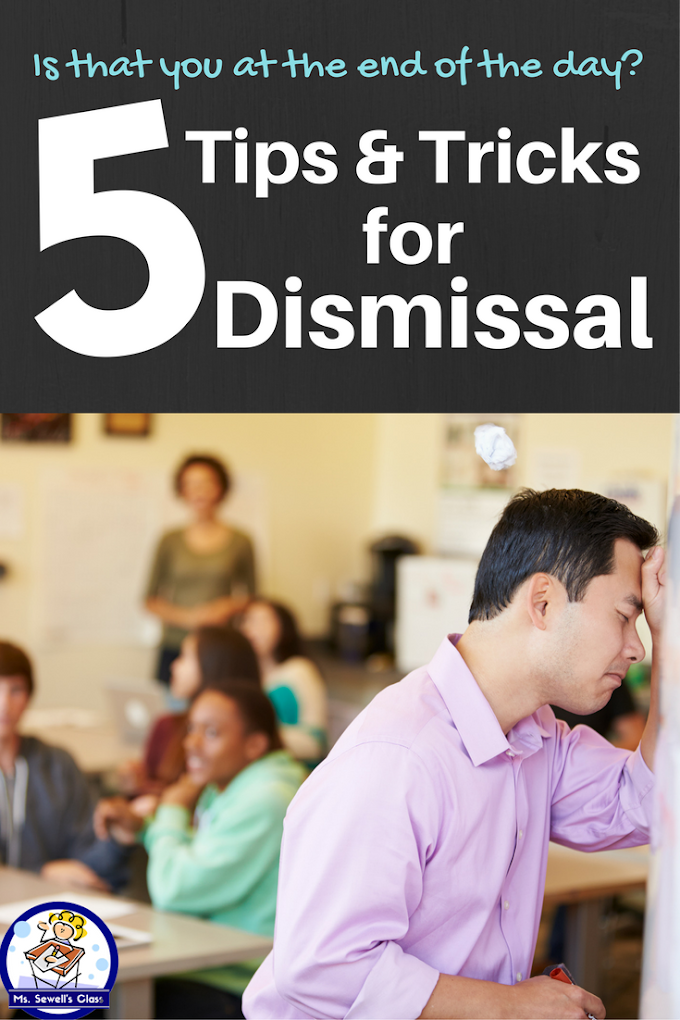What is it? It's Brain Breaks! It's those little moments your brain needs to make it through a mentally exhausting activity. Your students need them too. They are engaging their brain all day through your thoughtful lessons, effective routines, and interactions with classmates.
So what are some ways you can give them those breaks without totally disrupting the flow of your lessons? Below are 5 tips for successful brain breaks:
1. Keep Them Short
It's a Brain Break, not a Brain-cation (although, that sounds pretty good right about now). I shoot to keep brain breaks 5 minutes or less in my class. It's enough to get the blood flowing, but not completely take your class off course.
Also, set your expectation. When you can, let them know when brain breaks will occur. In the beginning of the year, I use them more frequently, often during transitions between subjects or just when I notice the class getting squirrely. As the year progresses, you may not need them as much. But I make it clear that for a brain break to work, we need to be able to get back to work right away, otherwise, we won't be able to take very many. They're usually on board (especially if you have to cancel a few brain breaks and they realize you mean business).
2. Technology is Your Friend
There is a fantastic website for brain breaks that I was introduced to when I started teaching second grade: Go Noodle! It has tons of different activities to get kids moving with creative characters and varied choices depending on what your class needs. And the best part: it's free! There's quick dancing, breathing, coordination videos and even a channel for Indoor Recess (the answer to my prayers).
If your class is really into it, you can send a letter home so that parents can sign up and their kids can create their own avatar. The more they use the site at home, the more their avatar "grows." But, if you're just looking for a last minute way to get them moving, fire it up, pick a video, and go.
3. Encourage Participation, Don't Require It
Sometimes, you're really feeling the break. You need to get up and move. Other times, you may still be processing the lesson or engaged in figuring something out. I've found that if I encourage my students to take brain breaks (and they see the rest of their classmates having fun), they're more likely to participate. If I require it, like anything else, I better be prepared with consequences if they're not doing it. For me, it's one of those battles I'm choosing not to fight. If you have a reluctant (hopefully singular) student who never wants to join in, tip 4 could really help you.
4. Consider Your Audience
What is your class like this year? Do you have a group of future varsity athletes that can't sit still? Do you have more bookworms who would rather read than head to PE? Do you have a lot of introverts or extroverts?
Think about what would engage the majority of your class. Would high energy dancing to a song for three minutes get them back on track? Would playing a word game with a partner be more their speed? Would free, creative drawing for five minutes help them refocus?
In my classes, I typically have a mix of personalities and learning styles. Brain breaks should reflect that so that, at some point, everyone is able to participate and get the break they need. Which leads me to my next point...
5. Give Students Choice
If you've read some of my other posts, you know I'm a big fan of giving students choices whenever possible. Brain breaks are the perfect way to incorporate more student choice into your day.
After you've considered your audience in step four, think about 3 activities students could pick from as their brain break. Think quiet to active. So maybe the choices are:
- Take a 5 minute doodle break
- Play mirror with a partner for five minutes (where one student does different stretches and the partner has to imitate them)
- Run in place for 5 minutes
Another option would be to let students pick the brain break. After you've done several different brain breaks in your classroom, let a student pick their favorite to complete. This could be done individually or it could be used as a reward -- let a behavior issue who finally complies choose the brain break the class will complete (hello class community and self-esteem building).
Need ideas for brain breaks? Check out my Holiday Themed Brain Breaks and Challenges. They're based on your students multiple intelligences and will help deal with all the energy that surrounds the holidays. They are in a card format, so you could allow students to pick a random card throughout the day. Boom! Instant Brain Break!




What are some of your class's favorite brain breaks?











0 Comments